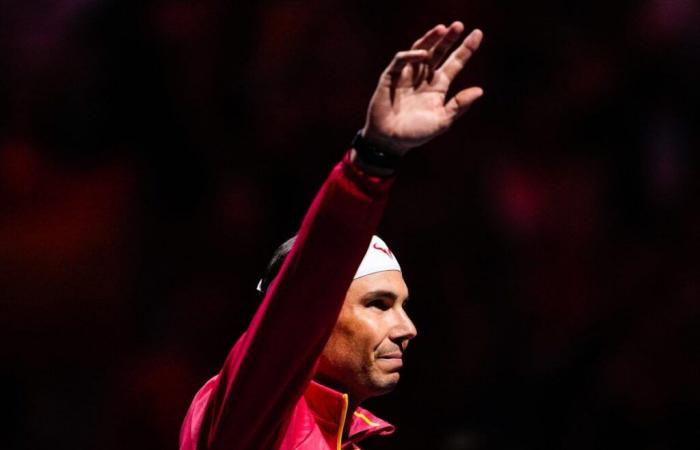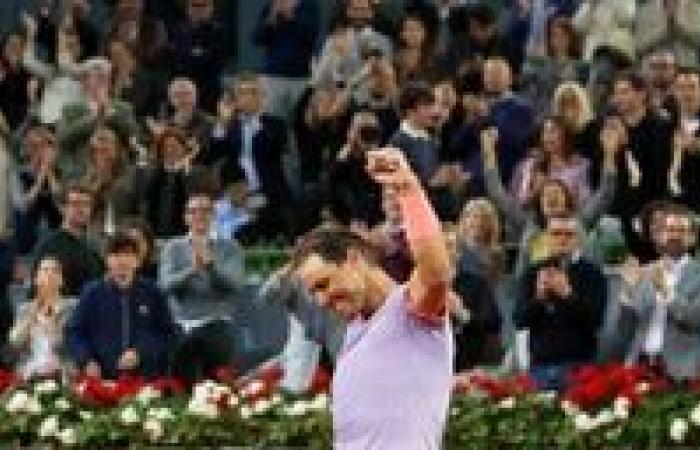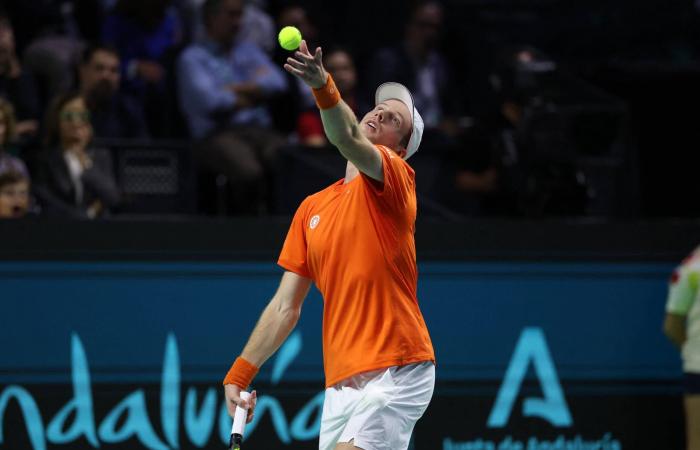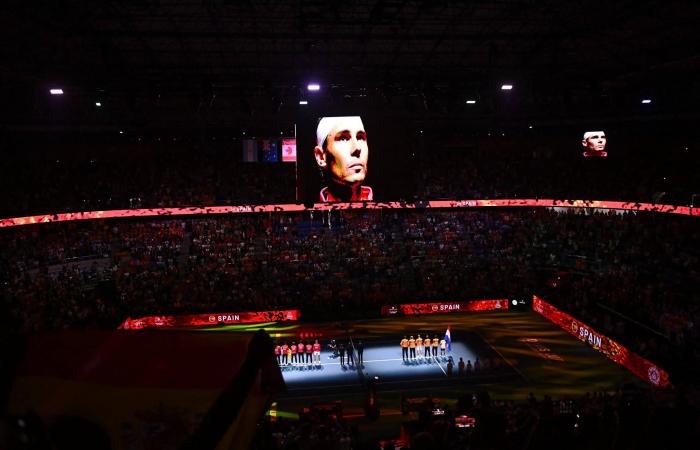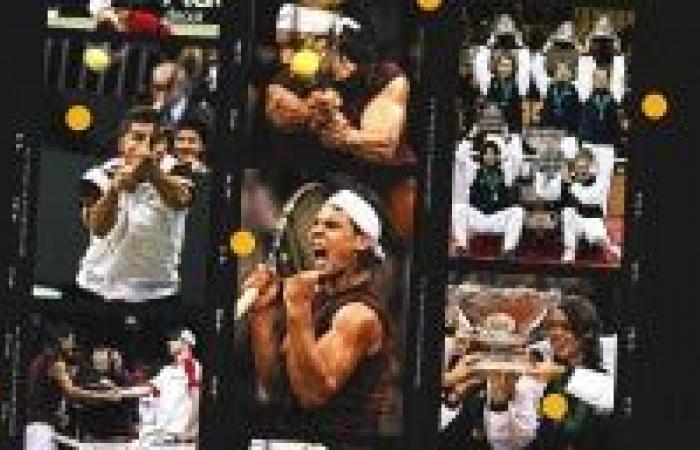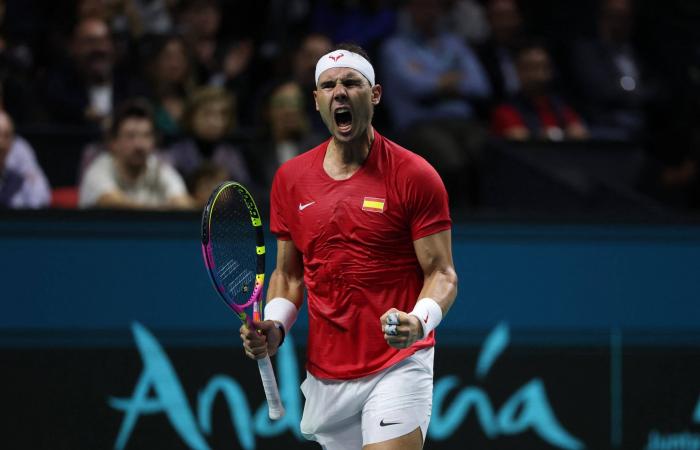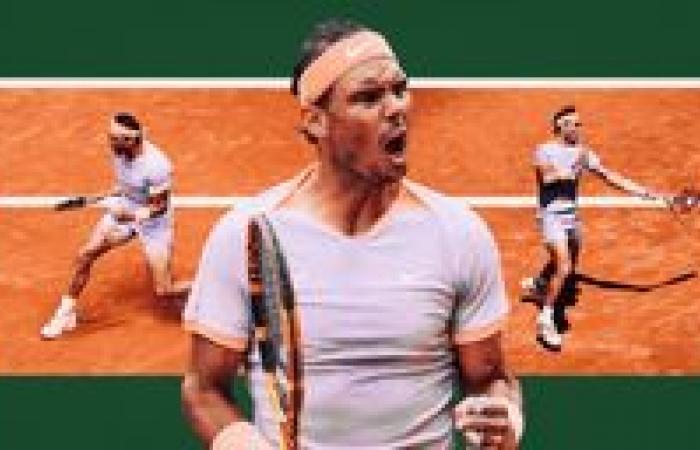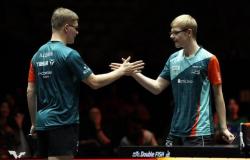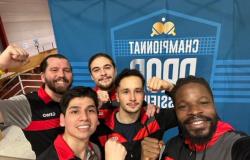Follow live coverage of Rafael Nadal’s last Davis Cup here
MALAGA, Spain — Botic van de Zandschulp beat Rafael Nadal in the Davis Cup quarterfinals at the Palacio de Deportes José María Martín Carpena 6-4, 6-4 Tuesday.
Van de Zandschulp prevailed over Nadal in a match ultimately decided by a battle of serves. Nadal’s physical issues hampered his ability to get free points behind his first serve, dragging him into long rallies that his body can no longer sustain. Van de Zandschulp hit numerous double faults and at times appeared overcome by the occasion, but ultimately recovered from them with calm efficiency. Despite a first break of serve from Nadal in the second set, the Dutchman kept him — and a raucous Spanish crowd — at arm’s length to seal victory.
The result leaves the Netherlands 1-0 up in the tie, with Carlos Alcaraz to face Tallon Griekspoor in the second singles rubber. If Alcaraz levels the tie with a victory, then it will come down to the doubles between Alcaraz and Marcel Granollers and Griekspoor and Wesley Koolhof to decide things. Should Spain lose, Nadal’s Tennis career will officially be over.
The Athletic’s Charlie Eccleshare and Matt Futterman analyze the match…
How did Nadal’s serve hinder him?
Nadal’s inability to serve at a sufficient level is driving him away from tennis more than anything else.
It was never the strongest part of his game — when he first burst onto the scene, it was probably the weakest — but he got so much better. He revved up his speeds with the help of coach Carlos Moya, and he could hit spots as well as anyone. What he lacked in power, he could make up for in precision.
In 2024, having a big first serve is regulation; it’s on return where the edge of the great players lies. Men’s tennis now involves collecting as many free points on missed returns or aces or easy balls that float back as possible, but Nadal’s average first serve on Tuesday floated around the 110mph mark.
That’s not going to garner many free or easy points. Against Van de Zandschulp and just about everyone else he faced this year, that limitation sucked him into multi-shot rallies that his body just doesn’t can’t cope with anymore.
Rafael Nadal’s lack of access to easy points behind his serve made every game a grind. (Jorge Guerrero / AFP via Getty Images)
Serves look like they are about arms and shoulders, but really they are about the spine and the abdominal muscles and the hips: They bend and snap and torque and whip the arm through the ball. Spine, abdominal muscles and hips? That could be a rundown of Nadal’s injury problems over the past two years — before considering the inevitable loss of speed that ageing brings.
Through the first set, Nadal landed 61 percent of his first serves and won 70 percent of those points. Despite four double faults in that set, Van de Zandschulp was serving at 76 percent and winning 90 percent of those points. Those numbers are tough to overcome.
GO DEEPER
Over 12,000 fans, an inside-out forehand, and a dream: Rafael Nadal makes magic in Madrid
Matt Futterman
… And how did Van de Zandschulp get hold of his?
When Van de Zandschulp hit two double faults in a row up 40-0 in his first service game, it felt as though his nerves at playing his idol might undermine his chance of winning.
When he hit two more at 3-4 in the first set, the first of which was a foot fault, that feeling strengthened. But the Dutchman escaped from the game, broke Nadal straight after and then served the set out pretty comfortably.
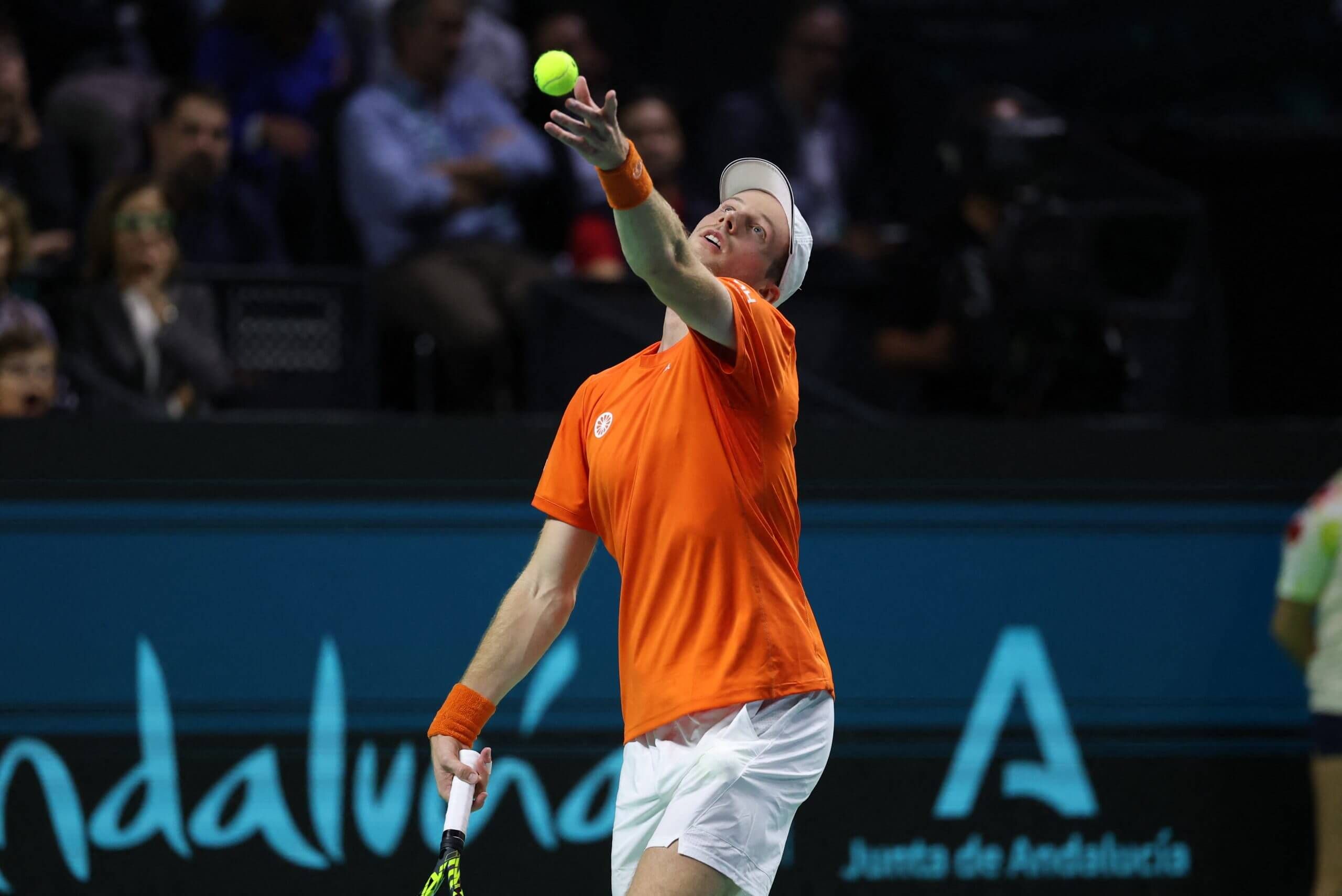
The Dutchman escaped from a string of double faults on multiple occasions. (Thomas Coex / AFP via Getty Images)
Van de Zandschulp counterbalanced those four double faults in the first set with five aces, and aside from those extremely shaky moments he served well as the numbers above indicate. As against Carlos Alcaraz at the U.S. Open, he remained unflustered by every single situation in the match, whether he was sending serves into the net or manoeuvring a 22-time Grand Slam champion around the court with relative ease.
The start of the second set saw another shaky moment, as he double-faulted for 15-30 when up 1-0. He responded with three unreturned first serves to avert the danger and consolidate the break.
Van de Zandschulp’s next service game followed a similar pattern: he started with two double faults, the second another foot fault, before reeling off the next four points with first serves to hold. He won his first seven service games despite all the doubts, and having been broken in the eighth he recovered from 0-30 down in the ninth.
Then he did the hardest thing of all: serving out against Nadal in front of a crowd that wanted him to play forever.
Charlie Eccleshare
How did the home crowd respond to the travails of their hero?
This was what the Malaga crowd had come to see, what some had paid thousands of euros for. Nadal playing singles — and for most of the first set, looking like he could deliver the win that almost everyone in the packed arena was willing into existence.
The home supporters couldn’t have done much more. They went wild after every point Nadal won, and regularly serenaded him with chants of “Rafa, Rafa, Rafa!” He in turn celebrated a couple of big points with that trademark clenched fist, as he tried to get himself going.
Trailing 4-1 in the second set but up break point, he asked the crowd for more noise. When he clinched his first break of serve, more than 10,000 fans roared as if their man had just won a Grand Slam title. Nadal did likewise, with interest.

Rafael Nadal was on home turf, as he was for much of his 2024 comeback. (Jorge Guerrero / AFP via Getty Images)
Credit must go to Van de Zandschulp for staying so zen. Based just on his body language, it would have been tough to tell whether he was playing in arguably the biggest match of his career or playing against a friend in his local park.
Credit too for the Dutch fans, who massed together in their distinctive orange and made plenty of noise as they revelled in their nation’s role as the ultimate tennis party pooper.
Despite the defeat for Nadal and his possible farewell, this definitely felt more celebration than a wake.

GO DEEPER
‘I beat him because he was still a kid’: Reliving the 2004 Davis Cup that birthed Rafael Nadal
Charlie Eccleshare
How will Nadal release his competitive spirit in retirement?
Ask any player what they think of when they think of Nadal and they all say some version of the same thing: the ultimate competitor.
New world No. 4 Taylor Fritz, who Nadal beat in a tiebreak with a torn abdominal muscle at Wimbledon in 2022, thinks that Nadal could be down 6-0, 5-0 40-love and still play points like the match was dead even.
That fire was still there Tuesday, even as Van de Zandschulp made it increasingly clear that he was going to be too tough an out for Nadal. There Nadal was, down a set and 0-2 and desperate not to go down a double break, sprinting to the back of the court to catch up with a lob and fire back a desperate spinning overhead as his body kept barrelling toward the back fence.
Two games later, he ripped off an ace down break point; needing to shorten points, he kept pushing into the net. When he did go down a double break, he followed it with his best return game of the evening, bull-whipping his forehand to earn one break point, then standing on the baseline in the rallies to earn another.

Nadal’s competitiveness has never faded — but the ability of his body to sustain it has. (Thomas Coex / AFP via Getty Images)
When Van de Zandschulp floated a backhand wide and the break finally came, he pumped one fist and then another and then the first one another time. The crowd roared with the ‘olé’ chant. A game later and back within one, he knew Van de Zandschulp was starting to feel the weight of it all.
Nadal came at him like the ocean. Van de Zandschulp stemmed his tide.
Nadal, ultimately, was here for it as he always has been, healthy or not. It’s what kept him around, kept him trying to come back amid all the injuries.
The big question he will have to answer beginning next week is how he can feed that hunger. Casper Ruud has said he is a terror on the golf course. He’s mad for the Parchisi board game. Will that be enough?
It’s hard to think so. Maybe competing like life and death are on the line will just have to be something he did for a while before he went on to do something else.
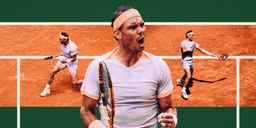
GO DEEPER
What’s it like to play Rafael Nadal on clay? We asked the players
Matt Futterman
What did Nadal say after the match?
We’ll bring you their on-court quotes and press conference reflections as they come in.
What did From the Zandschulp say after the match?
Speaking to Tennis Channel post-match, Van de Zandschulp, said: “In the beginning, we were both nervous. The first serves didn’t go smoothly, the crowd was tough, of course. Understandable.
“That’s what it is to play here in Spain against Rafa. It was a really special event.
“It’s tough to close out a match against him, knowing it could be his last (match) or not. I was hoping a bit more than going for it, so I just went for it and that did help in the end.
“(The support) was unbelievable, I needed it. There were too many people here cheering for him! I needed them a lot today.”
Recommended reading
(Top photo: Oscar J. Barroso /Europa Press via Getty Images)

